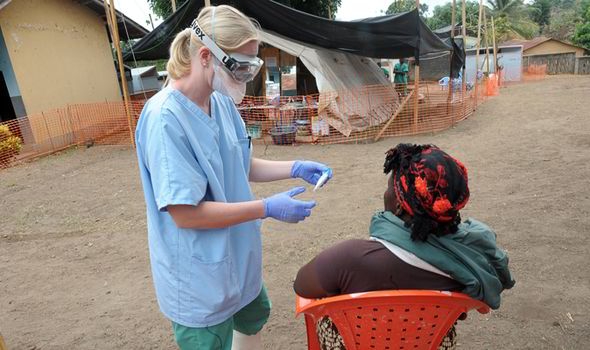
A single case of Ebola in Texas has sparked huge concerns among the American population and left public health officials, clinicians and politicians struggling to provide reassurances that the risks are minimal and manageable. Australians wonder about when the virus will arrive on our shores. An Australian expert in infectious diseases offered this advice: “Developed nations have a strong public health and hospital infrastructure; therefore, the appearance of new cases of Ebola in countries like the USA should not be a cause for alarm as they should have the resources to limit the spread of any infection.”
This is in stark contrast to the crisis situation in West Africa, where reports at the beginning of October indicated more than 7000 people had been infected and some 3300 had died. The week before last in Sierra Leone there were five infections every hour. The reality is certainly worse: monitoring and healthcare systems cannot keep pace with the outbreak and in many areas Ebola is spreading unchecked. It is projected that without major interventions up to 1.4 million people could be infected by January.
Meanwhile the healthcare systems of the most affected countries – Liberia, Guinea and Sierra Leone – are barely functional. Always weak, with little money to spend (less than $100 per person per year), supplies in short supply and trained health professionals emigrating in droves, the few facilities which remain open are overwhelmed with Ebola cases.
It’s inevitable in the face of public fears, and collapsing economies, that increasing numbers of people from the affected countries will look to escape to Europe, America, Asia and Australia and so there will be more cases like the traveller from Liberia who arrived in Dallas and then exhibited symptoms of Ebola. At the same time, those countries who are sending medical and other personnel to assist on the ground must be able to repatriate and treat their infected citizens.
At one level the United States is well equipped and organised to do this, both at home and overseas. The US military, including the Public Health Service Corps, is readily able to swing into action and provide protective equipment, laboratories, field-deployable hospitals and technical advisers. The Centers for Disease Control and Prevention (CDC) has expertise in managing extremely infectious diseases, and the National Institutes of Health can immediately focus on developing vaccines and treatments.
But despite public reassurances of action and control from public officials, there are significant concerns about the erosion of America’s health emergency preparedness and capabilities to manage a major disease outbreak. In the period immediately following 9/11 and the anthrax scares, Congressional lawmakers boosted preparedness funding but, in the years since, with the advent of the global financial crisis and partisan congressional politics, most of these funds have been lost. The CDC has had $US1 billion ($1.14 billion) stripped from its budget over the past decade and funding to hospitals for infectious disease outbreaks in 2014 is less than half what it was in 2003.
Austerity has also hit state and local government public health and disaster preparation funds which have been slashed by roughly one-third over the same period and more than 50,000 health department jobs have been lost since 2008. The Department of Homeland Security inspector general issued a damning report in September warning the department was woefully prepared for a pandemic.
The US is not the only country that has under-invested in public health. Australia now finds itself in a situation in which it is unable to offer needed personnel to help treat Ebola victims in West Africa because it has no means to get them home. Our ability to diagnose and treat the infected travellers who arrive on out shores is untested and unclear.
Australian governments will claim they are prepared, but the fact is the national preparedness is for the last crises – terrorist bombings and flu pandemics. Significant sums (about $15.5 million annually) have been invested in National Critical Care and Trauma Response Centre at the Royal Darwin Hospital, which was established after the Bali bombings in October 2002. There is a National Medicines Stockpile which includes protective gear, but most of the medicines are for flu pandemics and bioterrorism.
There is no doubt that Australia’s healthcare system will cope well with the management of Ebola virus when it arrives on our shores. But the requirements of the sophisticated contact tracking that will automatically be invoked will highlight the paucity of our national investment in public health resources. In 2012-13 just 1.5 per cent of recurrent health expenditure went to public health, down from a high of 2.3 per cent in 2007-08. Over that time public health expenditure has declined by 3.7 per cent every year; in 2012-13 the Commonwealth spend was $1.15bn, and the states and territories spent $884m.
Public health services are a public good and, as such, they are rightly funded by the Commonwealth Government. It is an investment that provides national protections and increases our ability to offer international support when epidemics loom.
Dr Lesley Russell is an Adjunct Associate Professor at the Menzies School of Health Policy at the University of Sydney.
